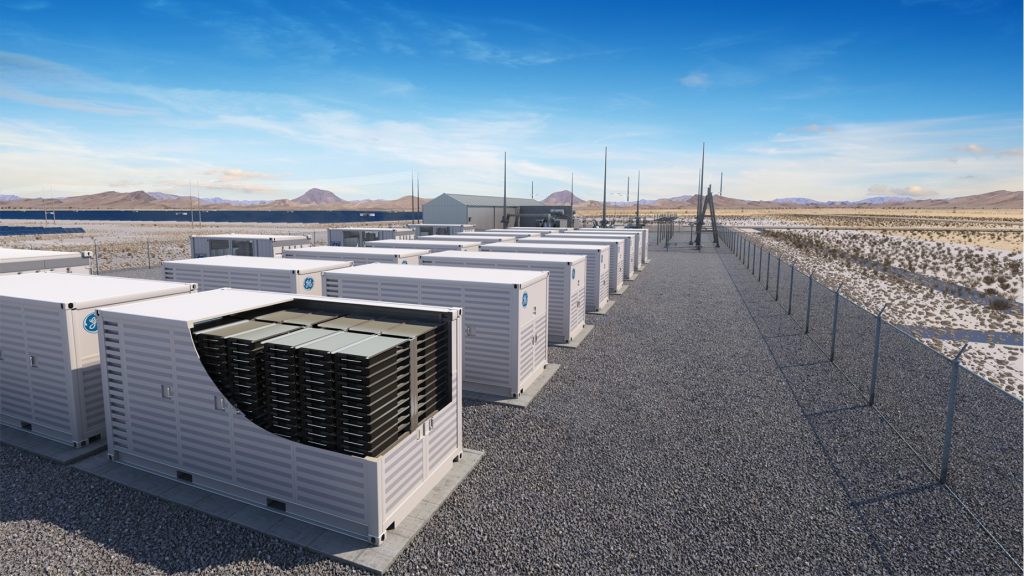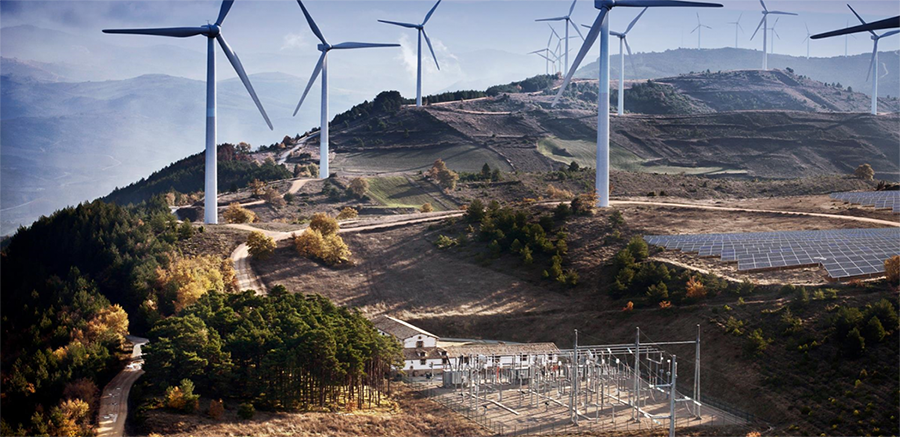Truth is, renewables could grow even faster. Unlike more conventional sources of power generation, they depend on the weather: The sun doesn’t always shine and the wind doesn’t always blow. But what if you could store megawatts of power from a windy and sunny Sunday and release it on dreary Monday morning as factories ramp up and workers turn on the lights? Add in smart software that acts as a traffic cop — redirecting solar and wind power as needed into the grid or into big batteries — and it would be a huge step toward making renewables available on demand. That’s the idea behind a new GE business called Renewable Hybrids.
The unit, a part of GE Renewable Energy, works with utilities and developers to create hybrid power networks, which combine renewable sources, efficient energy storage and software to create a more predictable supply of renewable electrons. “Hybrid is the next frontier in renewables,” says Mike Bowman, chief technology officer of GE’s Renewable Hybrids business. “It’s a paradigm change driven by technology development and market development.”
GE’s Renewable Hybrids links the company’s storage systems — like the Reservoir battery, which can store as much as 4,184 kilowatt hours, enough to power 145 U.S. homes for a day — to wind and solar technology and the electrical grids they feed into.
 Above: GE’s Renewable Hybrids will link systems like the Reservoir battery, which can store enough to power 145 U.S. homes for a day, to wind and solar technology and the electrical grids they feed into. Top and above images credit: GE Renewable Energy.
Above: GE’s Renewable Hybrids will link systems like the Reservoir battery, which can store enough to power 145 U.S. homes for a day, to wind and solar technology and the electrical grids they feed into. Top and above images credit: GE Renewable Energy.The dramatic drop in the cost of energy storage is making hybrid systems a winning business proposition for customers. “You can take relatively free electricity from the middle of the day and sell it at a premium at night,” says Tom Cuthbert, executive engineering leader at Renewable Hybrids. “If every generating asset has some form of storage with it, it’s going to change the market.”
At the same time, battery technology continues to improve, meaning the outlook for renewable hybrids is bright. “You’re going to start seeing extending the duration of battery life,” Cuthbert says. “Today four hours is the longest duration of battery storage. You’ll see that extended out more and more, as well as see new battery technologies come in.”
But batteries are just one part of the quest for predictable renewable power. Another avenue involves co-locating wind and solar farms at the same site. (GE is working on such projects in India, for example, and in Minnesota.) That’s because wind and solar already tend to be complementary; wind happens to blow more at night, when the sun graces a different part of the globe. Pairing wind and solar with storage not only allows operators to realize synergies in the capital and operating costs needed to dispatch electricity to customers, but also increase their predictability and “dispatchability,” as the industry calls it.
But the sky is not the limit. Hybrid arrangements can be used with any combination of power sources.
GE’s Renewable Hybrids business has already signed a handful of deals for hybrid projects. In April Helios Energy ordered two energy storage systems for its solar arrays in central New York state, and just last week Australia’s Solar River Project announced it had selected GE to supply its Reservoir battery technology for a planned 200-megawatt photovoltaic array. One market researcher is projecting that hybrid clean energy installations in the U.S. will at least double in five years to 1 GW, enough to power about 700,000 U.S. homes. Longer term, the energy storage market itself should see more than $100 billion in projects by 2030. Says Bowman: “GE is positioned to make a huge impact and be a leader in the space. We’ve got the right horsepower, the right people, the capabilities, the connections and the brand. We’re excited about it.”





